
Table of Contents
Chengdu Visitor's Guide Part II: Pandas, Sichuan Opera & More!
Chengdu (成都) is the capital of China’s Sichuan Province and a bustling metropolis with a population of over 14 million people! Yet, Chengdu still maintains a more laid back atmosphere than cities like Beijing or Shanghai. If you’re planning a trip to Mainland, make sure a stop in Chengdu is on your agenda! In my Chendgu Visitor’s Guide Part I you’ll find top recommendations for eating your way through Chengdu. Here in Part II we’ll explore Chengdu’s other ‘must see’ places during your visit.
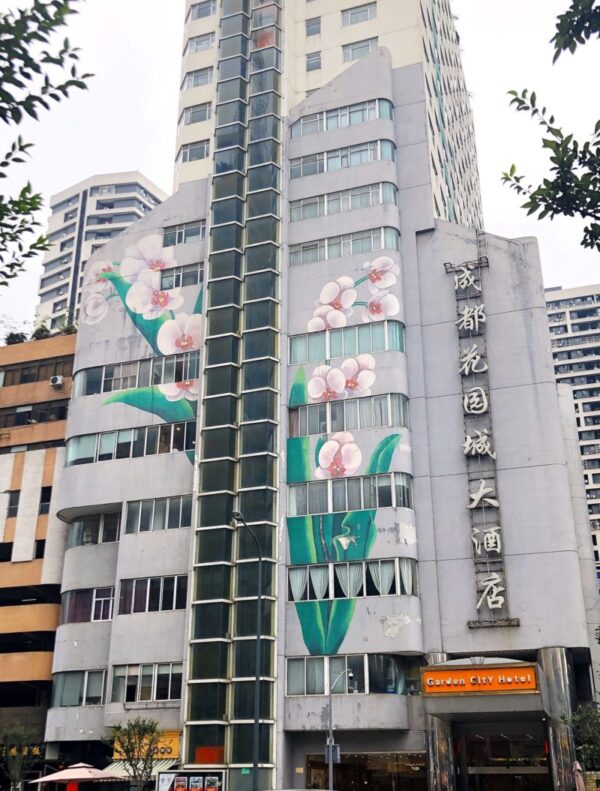
Table of Contents
Pandas, Pandas & More Pandas!
Chengdu is famous for two things: Sichuan cuisine and pandas. They’re cute, they’re cuddly and they’re everywhere! Chengdu is seriously the city of Pandas, and I cannot overstate how intensely panda imagery dominates the entire cityscape! Panda graphics, statues, mascots, you name it! But, why all the pandas you ask? Pandas are actually native to China’s Sichuan Province. Due to years of urban development, the natural habitat of the pandas continues to be threatened. Today Sichuan’s protected breeding and research centers are critical to the survival of China’s endangered panda population. So, what’s the best way to actually visit some real-life pandas when in Chengdu? There are three different options within about 2 hours of the city depending on your time, interest and budget.
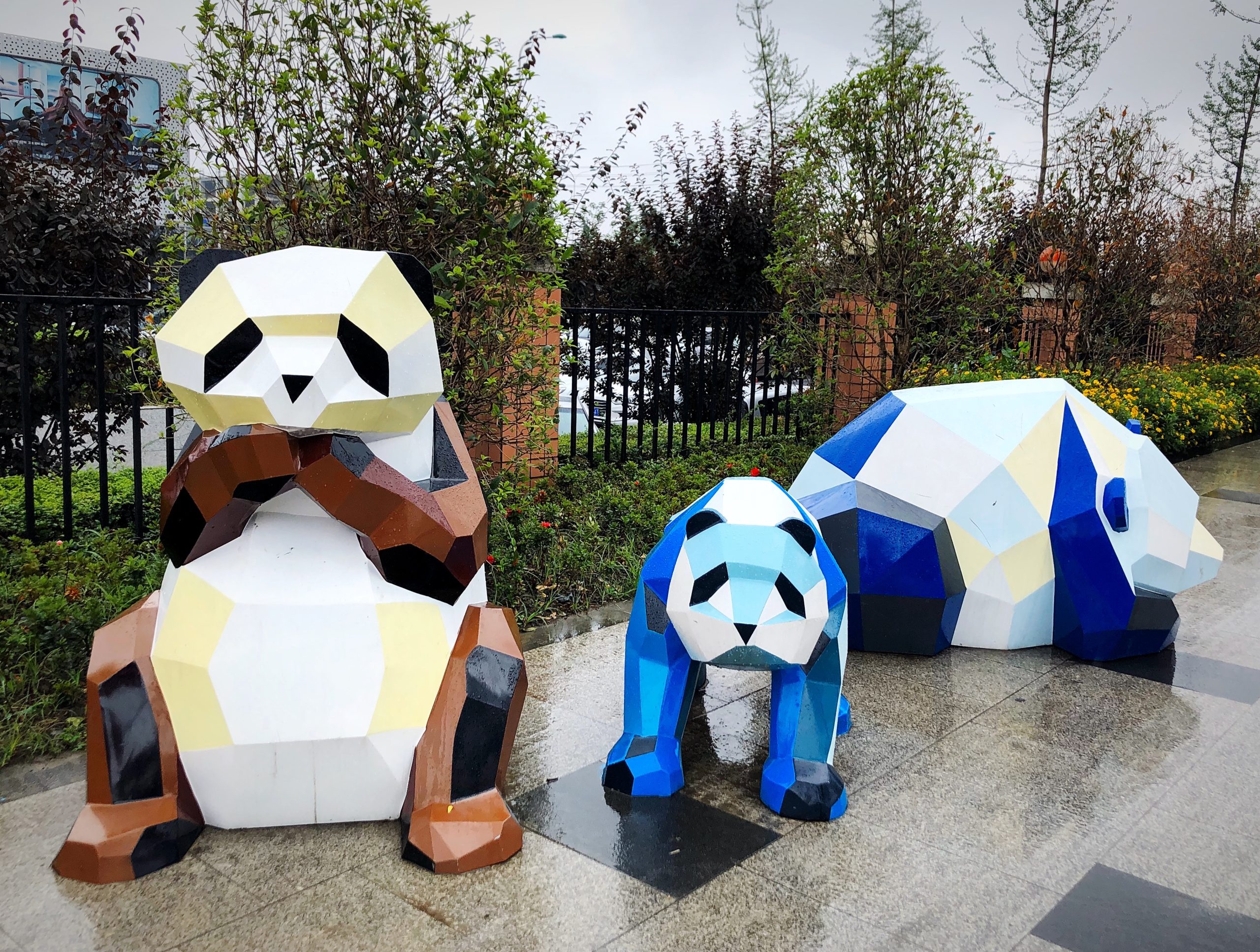
Chengdu Research Base of Giant Panda Breeding - (成都大熊猫繁育研究基)
Located on the outskirts of the city, Chengdu Research Base of Giant Panda Breeding is the most popular and easily accessible option for visiting pandas. The Research Base is like a panda-only zoo, but next level. There are a variety of panda enclosures, and depending on the time year you’re visiting you’ll also see infant or baby pandas! I’ve been to plenty of zoos in my life, and at first I was skeptical. But, honestly, a visit to the Research Base is worth it! First, just watching these cute, furry creatures eat, roll around and even nap is such a fun way to spend a morning (or day)!
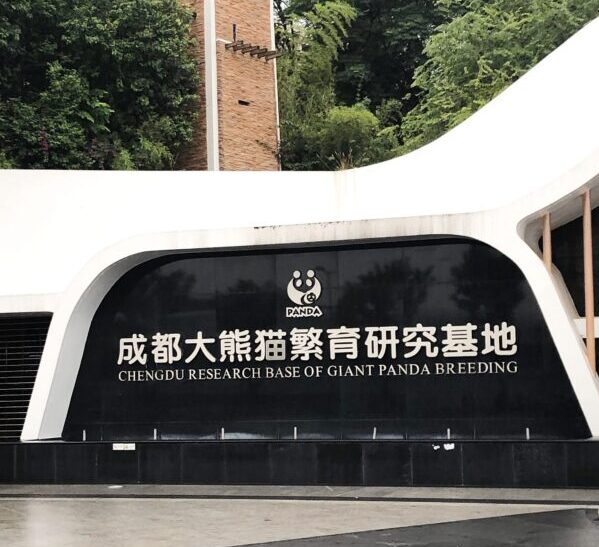
The Research Base was established to initially care for 6 sick giant pandas that were rescued in the 1980s, and over the past three decades the Base has become one of the preeminent centers of panda research and breeding globally. When you can finally pull yourself away from watching the lovable and playful pandas, make sure to visit the Giant Panda Museum and Scientific Discovery Center. You’ll leave the Research Base knowing more than you an ever thought about panda diets, relationship patterns, habitats and more!
Tips for Visiting the Chengdu Research Base of Giant Panda Breeding
The Research Base is one of Chengdu’s busiest attractions. Follow these tips to set yourself up for the best visitor experience.
Go Early: The Research Base opens daily at 7:30 am. Make sure to arrive by 7 am to be at the front of the line to buy your tickets. The line for entrance will start to get pretty long by 7:30 am. Once the doors open it feels like a 5K starting line, but instead of runners you’re in a crowd of panda-lovers eager to get the panda party started! Also, the pandas get breakfast first thing in the morning before opening so they’re most likely to be awake and active. If you arrive later the pandas are more likely to be sleeping and the crowds of tourists more active. Not the dynamic you’re hoping for!
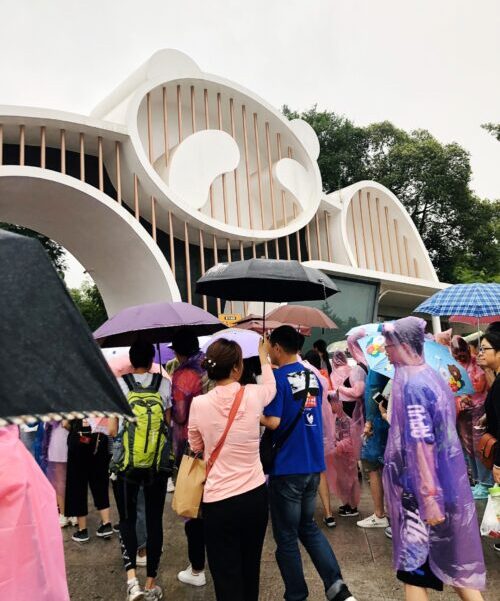
Be Prepared for Souvenir Hawkers: While waiting in line for tickets, be prepared to be approached by local vendors selling panda headbands. We held firm not buying one, but if you’ve got kids you may just bring along some cash and let it be. They do make for cute photos!
Go Early & Eat First!
Visit the Pandas First and the Learning Centers Second: The Museum and Scientific Discovery Center are located close to the entrance to the Research Base. If you’ve arrived nice and early, head to the further panda enclosures first. You’re more likely to get close-up views without being surrounded by hoards to fellow visitors.
Eat Breakfast BEFORE You Arrive: Yes, I know planning for a 7:00 am arrival makes for a very early breakfast. But, meals at the Research Center are not sold until about 11:00 am. There are multiple cafes and restaurants, but don’t expect to buy breakfast. My latte was a good holdover, but by 10 am (after 3 hours of panda-filled bliss) I was getting hangry and the only option we could find was meat on a stick. (Honestly, the meat was pretty good, but again, not breakfast.) If you stay for lunch, there are very cute bento boxes made to look like panda faces.
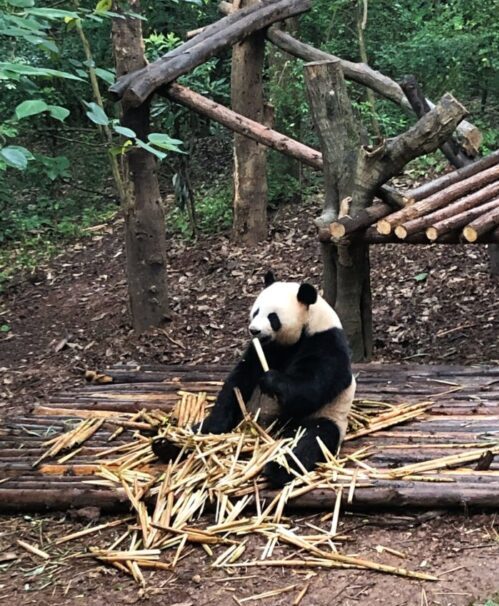
Getting to The Panda Breeding & Research Base
There are a few different ways to get to and from to the Panda Research Base, including public transit, tourist shuttles and a taxi. Since you want to get there pretty early, I recommend paying the extra for a taxi in the morning. Click here for additional public transport information.
You can also try taking the HiPanda Shuttle Bus to travel between various tourist destinations in Chengdu including the Research Base, Wuhuo Shrine Museum, Du Fu’s Thatched Cottage and even the Dujiangyan Irrigation System. This is a bit more expensive than public transit, but super convenient and easy.
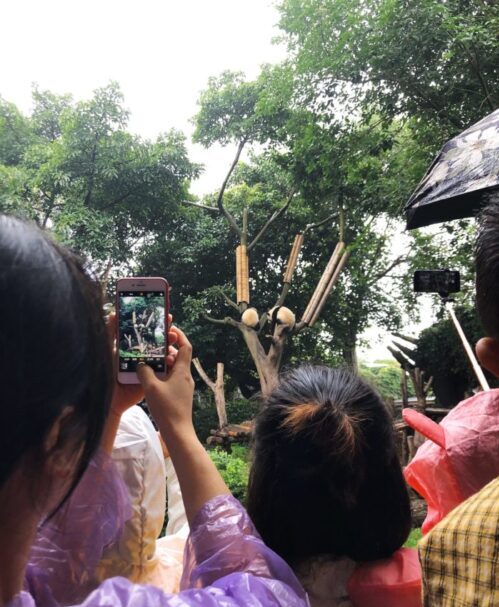
Wolong Panda Center & Dujiangyan Panda Base
Around Chengdu you will find two additional panda breeding and research centers: Wolong Panda Center and the Dujiangyan Panda Base. Both are further outside the city, and I recommend booking a tour if you visit either one. Sichuan’s panda sanctuaries are UNESCO-recognized sites and make up a portion of the largest remaining natural panda habitat in the world.
'Volunteer' for the Day
For a more interactive experience, you can ‘volunteer’ for the day to help take care of the pandas. ‘Volunteer’ programs usually include helping to clean the panda enclosures, learning about panda care, feeding the pandas (through the enclosure gate) and making panda food in a small group setting. I say ‘volunteer’ in quotes because you should expect to pay at least $150 per person for the full-day experience, including hotel pick-up and transportation.
Note that out of safety considerations for the pandas, you can no longer pay extra to hold or cuddle them. If it has been your life-long dream to be a panda keeper, then I say go for it. If not, a visit to the Research Base in Chengdu will probably satisfy your panda needs.
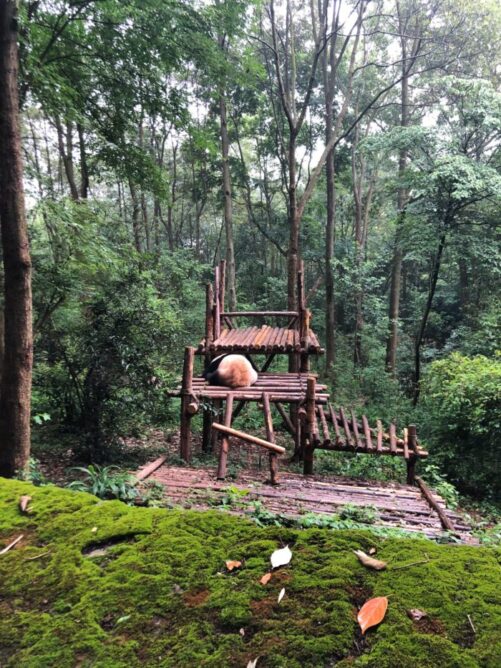
Planning your first visit to China?
Read my post on Tips for First-time Travelers to Mainland China!
Tianfu Square
Next, we’re headed to Tianfu Square, which sits at the center of Chengdu. Surrounded by museums and a hub for commerce and transit within the city, Tianfu Square is full of activity all hours of the day. At over 21 acres, Tianfu is the largest square in Southwestern China. The Square is divided in half by an ‘S’ shape, creating a symbol key to Chinese Taoist tradition and a root of the more commonly known yin-yang symbol.
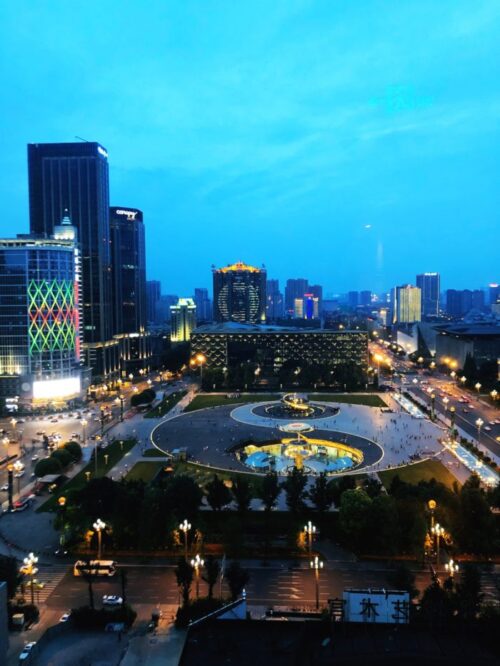
Tianfu Square Architecture
Tianfu Square is not only a testament to China’s recent commercial growth, but ode to Chendgu’s history and traditions. At the center of Tianfu Square you’ll find a statue in the form of the Golden Sun Bird, an ancient artifact found in Chengdu’s Jinsha Ruins. Discovered in 2001, the Jinsha Ruins date back to between about 1200 and 600 B.C. when the Jinsha culture was thriving in modern-day Chengdu. The Golden Sun Bird has become a symbol of Chengdu City. Tianfu Square is also home to two other large statues with winding golden dragon motifs surrounding their inner pillars. These statues represent the Yangtze and Yellow rivers, two bodies of water critical to the early development of Chinese society.
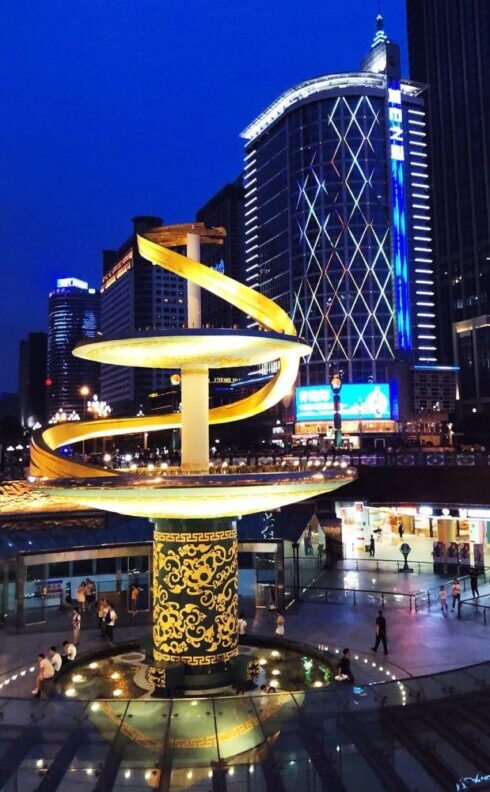
Below Tianfu Square is a shopping center full of small businesses and food vendors. But, if you’re looking for truly delicious food options, check out the local restaurants along Donghuamen Street 东华门街 for mouth-watering hot chili oil noodles.
For top food recommendations in Chengdu, read my guide to 'Eating Your Way Through Chengdu'!
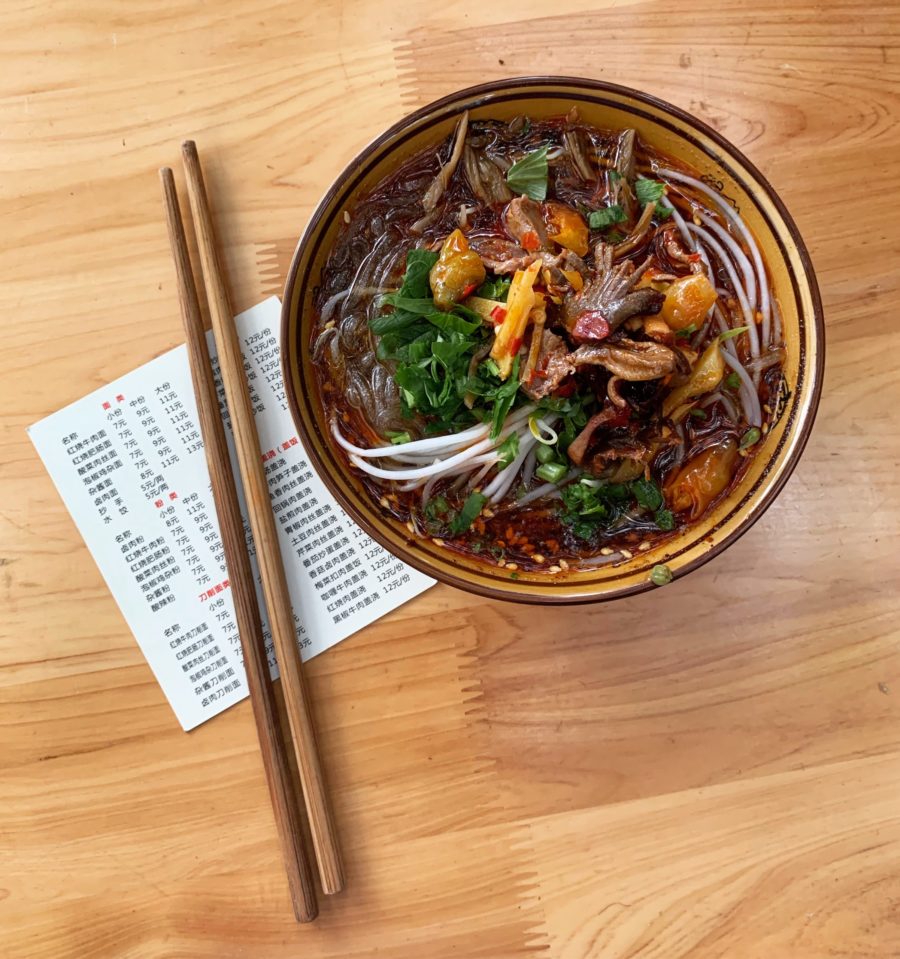
If you’re visiting Chengdu, I highly recommend staying at a hotel close to Tianfu Square. It is centrally located and has easy access to two main metro lines. Also, giving taxi directions will be a piece of cake. I stayed at the Lia! Chengdu Hotel, located just a block from the Tianfu Square. The price was great, especially for such a central location. Staying in this part of the city just made everything a bit easier to navigate.
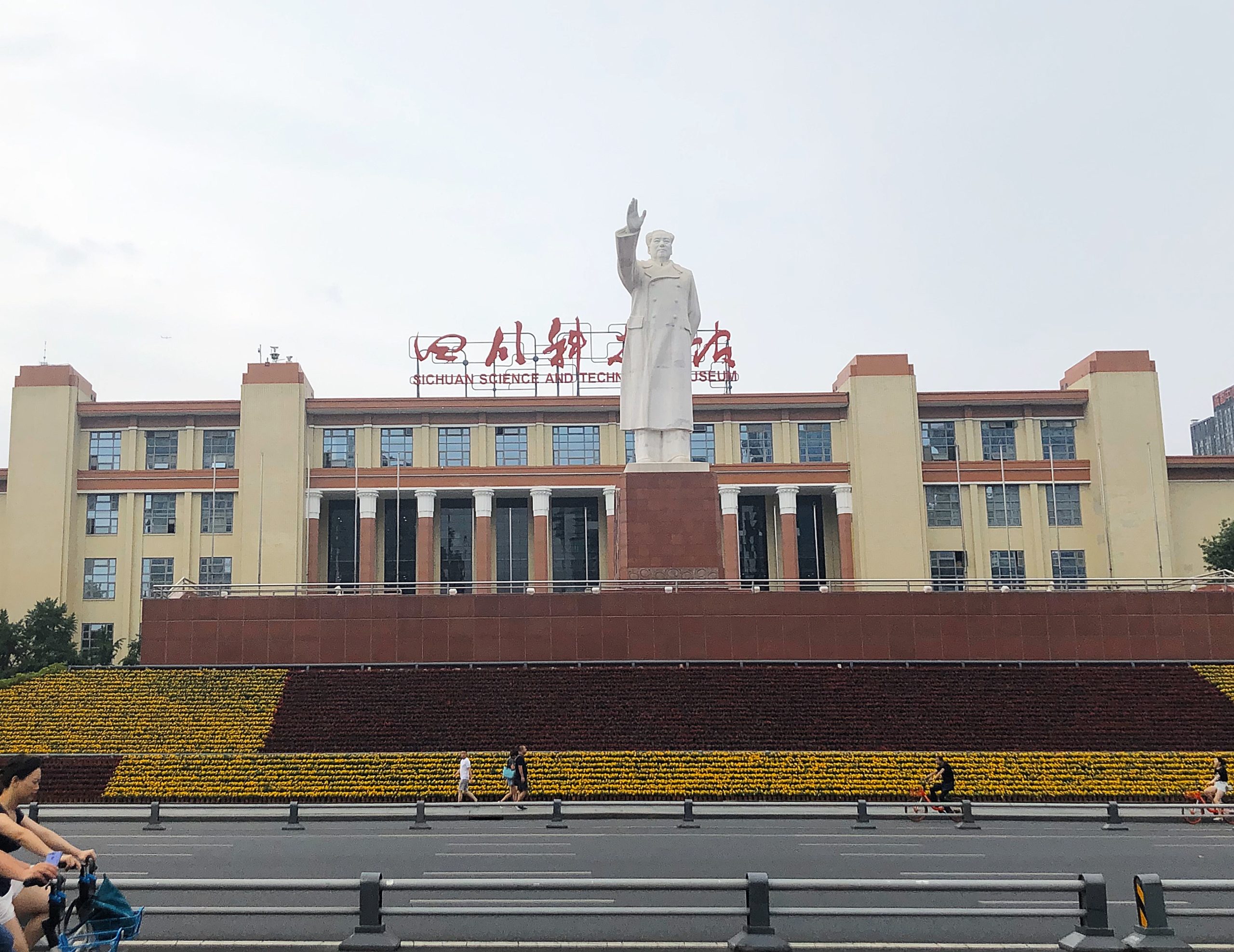
Statues of Mao
To the north side of Tianfu Square is a 98 ft marble statue of Mao Zedong looking out over Chengdu. Statues of Mao still stand tall in cities throughout China. Various museums and cultural institutions also surround Tianfu Square. You’ll find the Sichuan Science and Technology Museum, the Sichuan Art Museum, the Chengdu Museum and more! The combination of Chengdu’s incredible food scene, deep history and natural beauty make it one of the best places to visit in China!
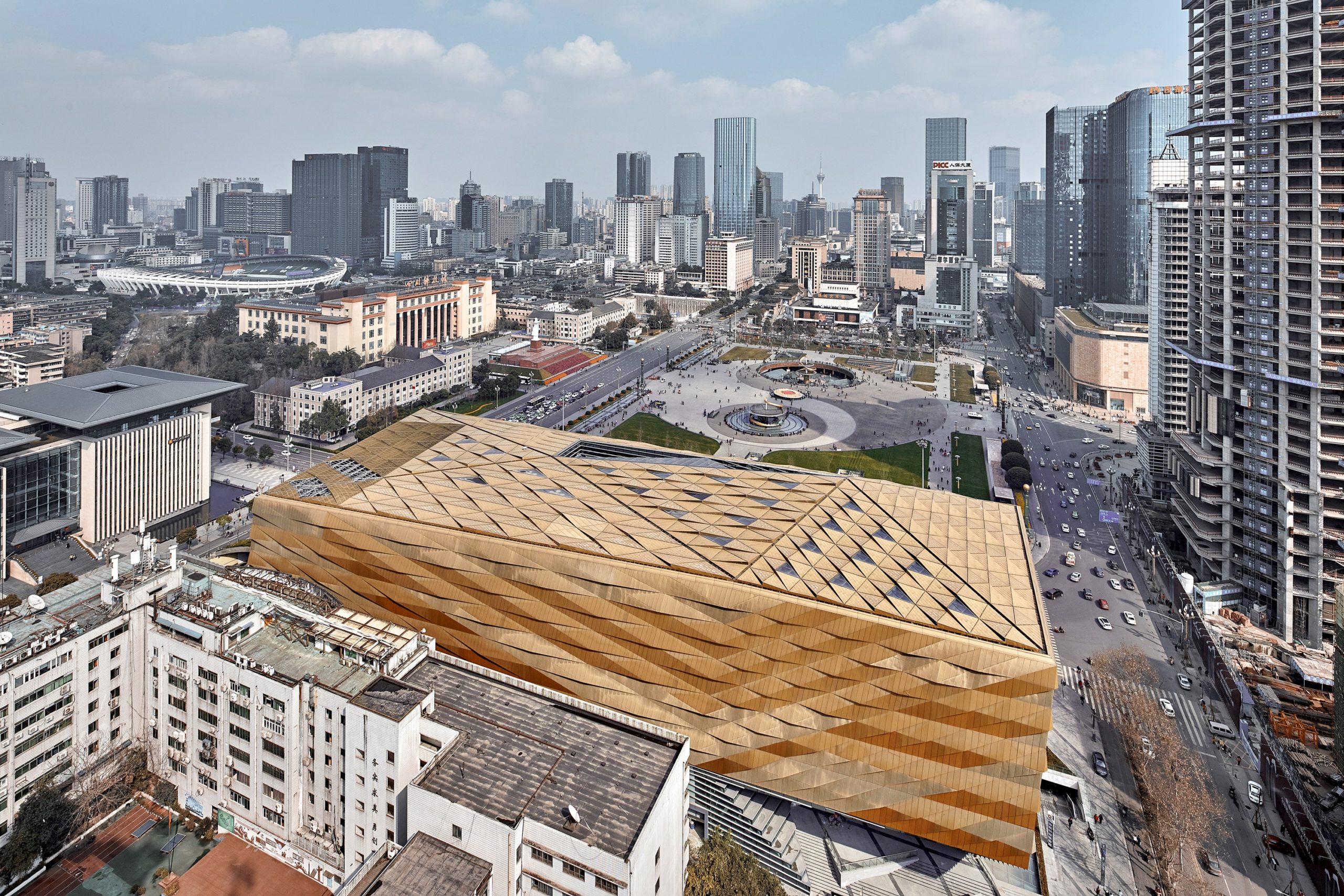
Chengdu Museum (成都博物馆) New Hall
The Chengdu Museum was the only museum I ended up visiting while in the city. It is conveniently located next to Tianfu Square, and admission is free. Note that you will be required to show your passport in order to pick up a free ticket. The Chengdu Museum is 6 floors, and has both permanent and rotating exhibits on display. The permanent collection is heavily comprised of artifacts sharing Chengdu’s long history spanning more than 2,000 years. If you’re interested in historic artifacts and archaeological history, this is definitely the museum for you! The New Hall building itself is also a sight to be seen. Designed by UK-based architects Sutherland Hussey Harris, the structure was built just a few years ago in 2016. For structural details and concept design, read this article on Archello.
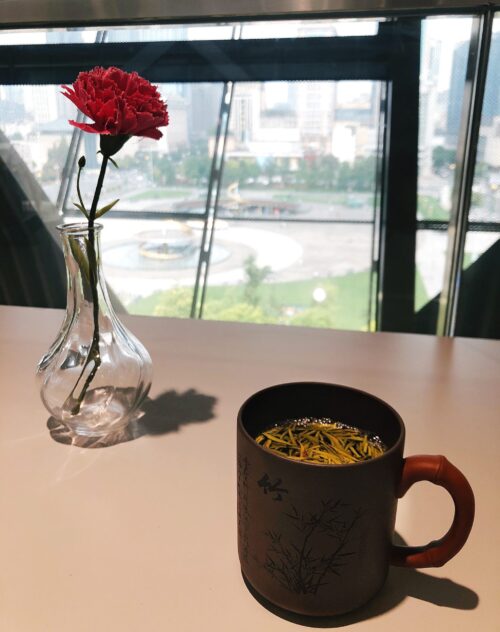
The Chengdu Museum was not one of my highlights, but it does a have a lovely cafe on the top floor. We visited on a rainy afternoon, and it was a great spot to enjoy a warm tea and read or write letters.
Note that the Chengdu Museum is closed on Mondays. The rotating exhibits were not translated into English, but as always, Google Translate saved the day
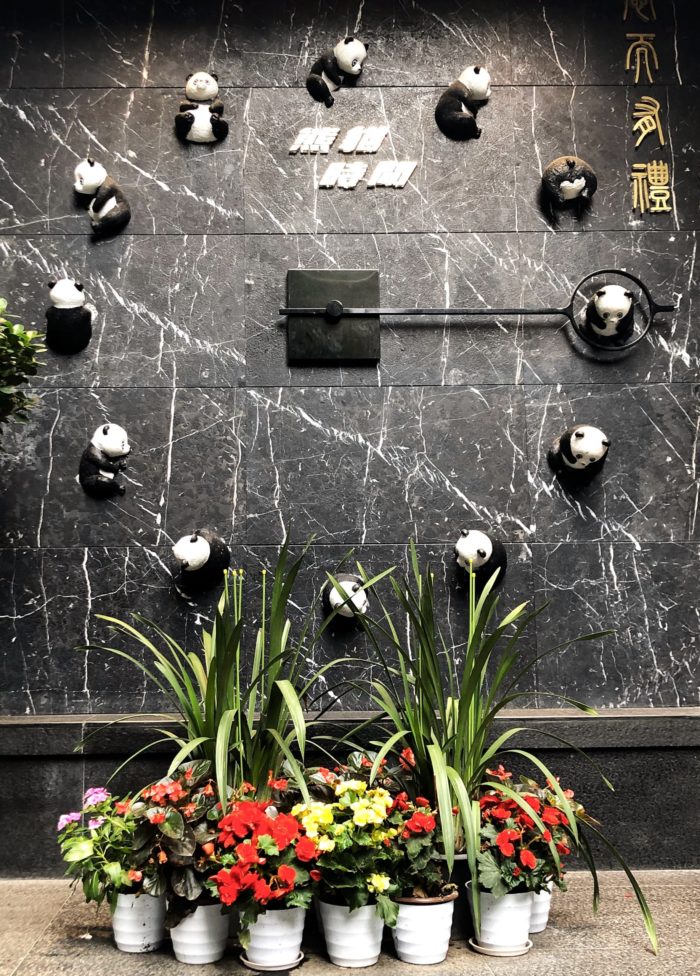
Sichuan Opera
Music, dance, fire, masks, swords, comedy, tragedy, acrobatics – an evening spent at a Sichuan Opera will be unforgettable! Rooted in over 300 years of Sichuan tradition, Chengdu is now home to this local art form.
Face-Changing Opera
One of the most well-known elements of Sichuan Opera is ‘Face-Changing’ or ‘Bian Lian (变脸)’ where the performers rapidly change masks with the flick of a fan, a puff of smoke or a twirl. This feat of choreographed magic is just amazing. It is truly unfathomable how the performers are able to master such a skillful sleight of hand. Traditionally, the art of Bian Lian was passed down from generation to generation, but only through male lineage. But, over the past few decades the art form has begun to open up and Face-Changing and Sichuan Opera performances can be seen more frequently in other places around the world.
 Photo credit: xiquinhosilva from Cacau
Photo credit: xiquinhosilva from Cacau There are multiple Sichuan Opera houses to choose from in Chengdu. Shufeng Yayun (蜀风雅韵), located inside Chengdu Culture Park, is one of the popular for visitors to Chengdu. Shufeng Yayun has a traditional tea house setup, and you can either go on your own or book an experience through a company like Viator. Read more here about visiting Shufeng Yayun.
Chengdu Visitor's Guide - Guide to Top Places to Visit in Chengdu
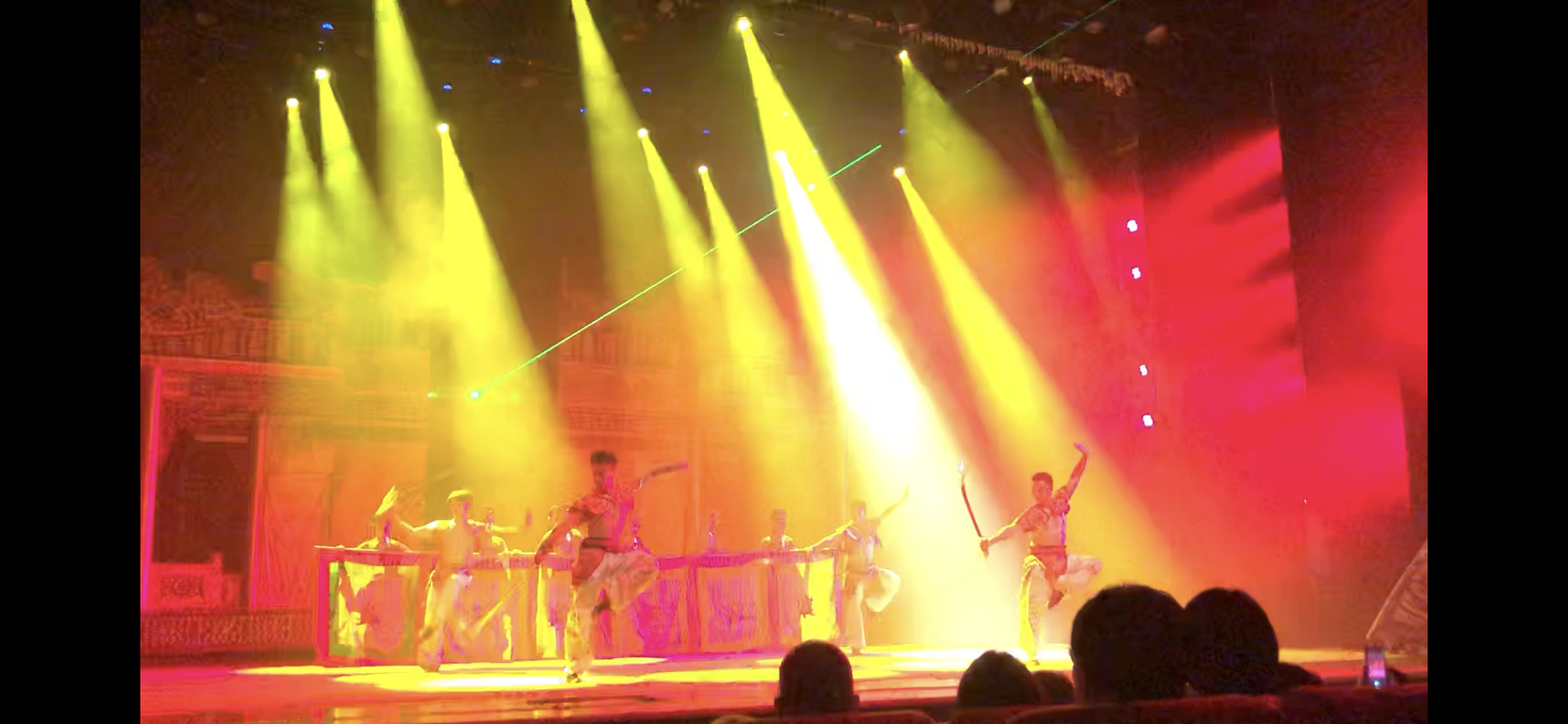
Jinjiang Theatre (锦江剧场)
For a Sichuan Opera experience where old meets new, check out Jinjiang Theatre! The theatre is set up with stadium seating, and the opera performance blends traditional music and instruments with 3-D digital projections. The performance I attended at Jinjiang Theatre was unlike anything I have ever seen before. The opera still showcased all of the traditional elements you would expect to see, including sleeve throwing, fire breathing and face-changing masks. If you’re looking for a modernized take on this traditional art form, visit Jiajiang Theatre.
Address: 54 Huaxing Main St, Jinjiang District, Chengdu, Sichuan, China (四川省成都市锦江区华兴正街54号)
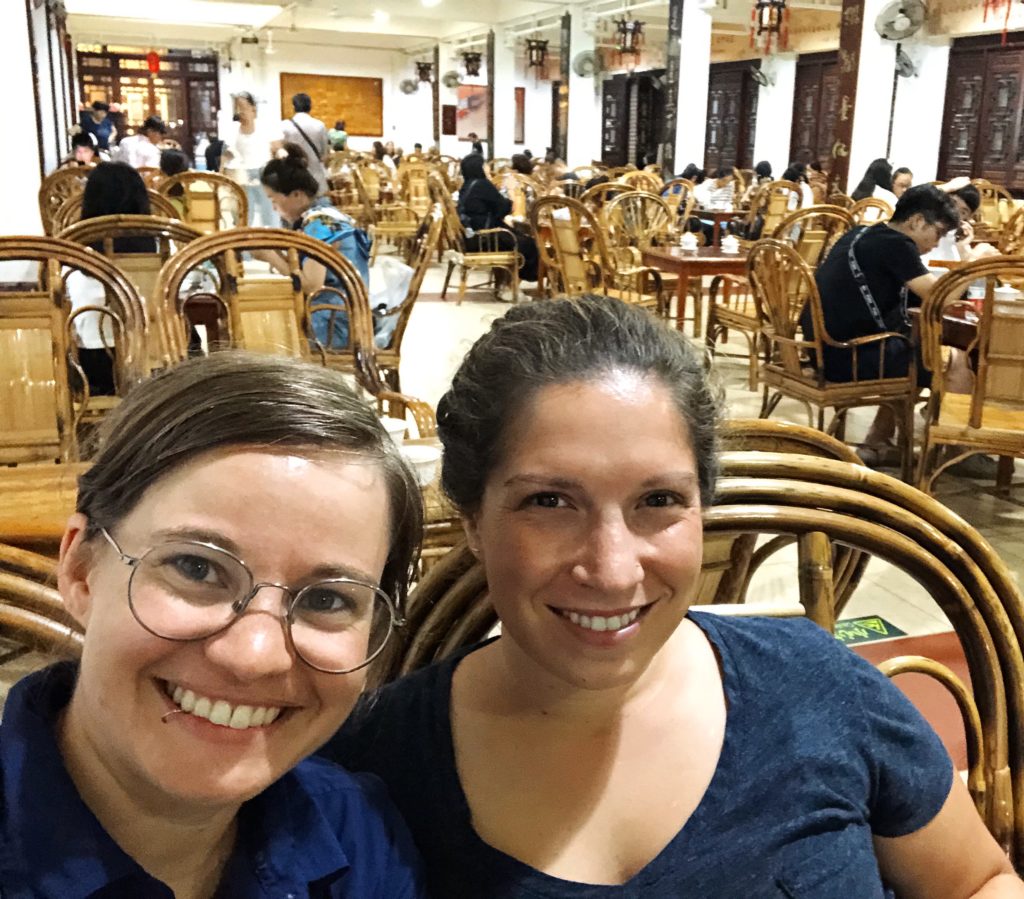
Tea Before The Show
Head to theatre early (about 45 minutes to an hour before the performance) to relax at the tea house and enjoy a complimentary cup of tea. For a small fee you can get a short back massage or traditional ear cleaning. Vendors will come around to all of the tables, so no need to look far. I went for a shoulder massage but opted out of the ear wax option. When the show is about to begin you will be ushered into the theatre. Also, no need to dress up. On my visit there plenty of adults and families wearing jeans and everyday clothing.
You can either buy tickets online through various tour vendors for Jinjiang Theatre or just go in person for the best price. We purchased tickets on the same day, and it was very easy. Just make sure to go earlier in the day so they do not sell out. Aim for an end row seat in the middle section, and being close up is great for views, but the sound is very loud. We got a little confused finding the ticket office, but ask at your hotel concierge and don’t be afraid to ask for help finding it when you know you’re nearby.
Day Trip from Chendgu:
Leshan Giant Buddha (乐山大佛)
When planning your trip to Chendgu, build in time for a couple day trips to explore more of the Sichuan region. I highly recommend heading to Leshan (乐山) to see the Giant Leshan Buddha and the Dujiangyan Irrigation System.
Just an hour away from Chengdu, a visit to the Leshan Giant Buddha is a fantastic day trip or long weekend adventure. Leshan’s Giant Buddha was carved into a cliff face during the 700s and stands over 230 feet tall. You can actually climb down steps carved alongside the Buddha, going from the top of his head all the way to his giant toes! Take a boat ride along the river for even better views. Visit my Self-guided Tour to Leshan post for top recommendations to plan your visit to Leshan!
Pin it!


Don’t forget to read my Chengdu Visitor’s Guide Part 1: Eat Your Way Through Chengdu! for top recommendations of where to eat in this amazing city! Did you enjoy this post? Or do you have other top tips for visiting Chengdu? Let us know in the comments to make this post even better!

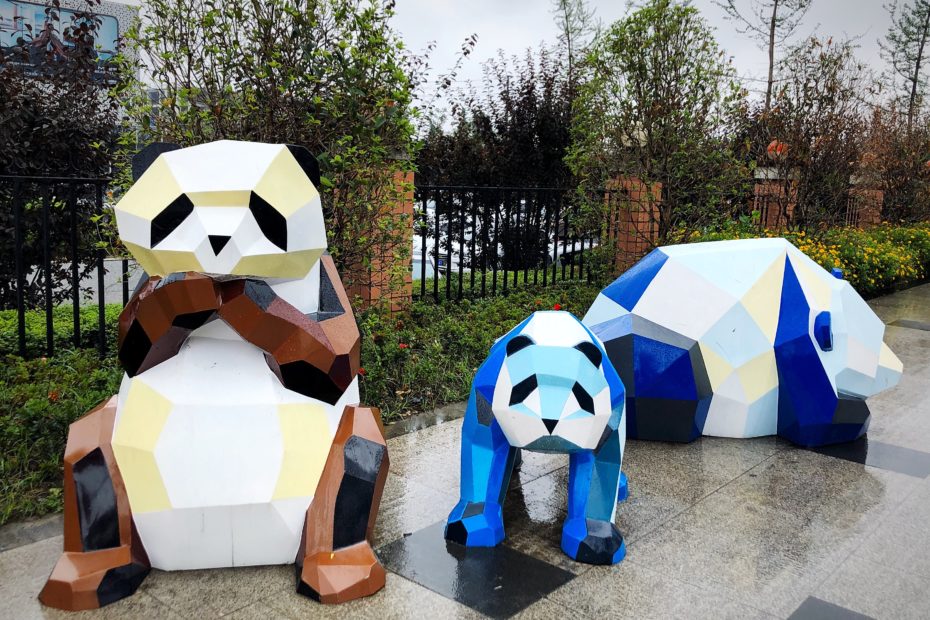
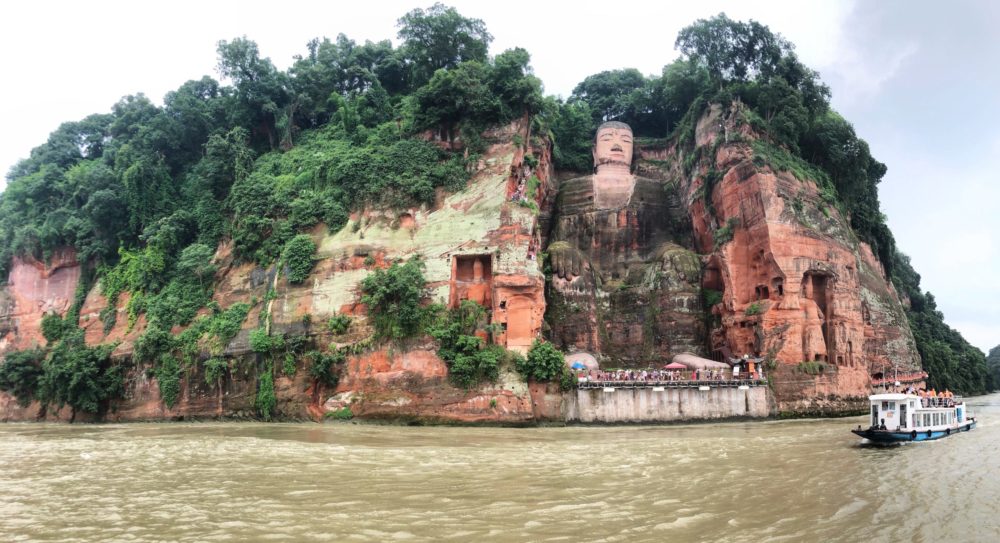



This post just makes me happy! As exciting and interesting as the city appears, I would especially love to see all the precious and beautiful PANDAS! What an amazing experience!
The pandas are sooo cute! Thanks for stopping by.
Oh my god in would so pay to help with the pandas! I had no idea that was even possible so I’m definitely saving for later!! I think Id also enjoy the opera! There’s something about watching a performance in another language
Pam, I hope you can make it to visit the pandas! Share photos when you do! 🙂
When I was a teacher I went to chengdu because we had a sister school there but I never got to see the pandas.
Laura – maybe one day you can go back to see the pandas! Thanks for stopping by.
I’m an animal lover and China is on my list! Once we will be able to travel again, and the time to visit China comes, I will try to go visit this place 🙂
Val – I hope you make it to Chengdu! If you’re an animal lover, the pandas will be a special treat!
Wow looks like an amazing trip! Love hearing about these other cities in China that aren’t your typical tourist place. I’ve been to Beijing and Hong Kong, but would love to visit Chengdu and spend a day with the pandas! 🙂
Thanks for stopping by, Kelly! Chengdu is definitely worth a visit! There are plenty of other great urban and rural areas you can visit around the Sichuan province.
This is such a detailed and useful resource for visits to Chengdu. I like all the extra tips you gave like arriving early at the Chengdu Research Base of Giant Panda Breeding. As a Panda lover (I haven’t see a real one yet) I will be heading here super early when I get the chance to visit China.
Bolupe, thanks for stopping by! Since you’re a panda lover, I really hope you make it to Chengdu 🙂 They’re just so cute!
Wow! What a unique place and an amazing trip! I would love to see pandas in person!
The cute fotos are absolute goals, thanks for that ❤❤❤
This is such a beautifully thorough guide and these types of posts fuel my desire to visit China. Saved for reference and digging up your other reads!
When I was planning my China itinerary, I was originally going to visit Chengdu, but with so much to do, I decided to scratch it as I grew up in San Diego and they have pandas at the zoo. But, hopefully when I get to China again, definitely going to include Chengdu. The city looks fascinating and I’d love to see the giant buddha.
Pingback: Visiting Pandas in Chengdu - What You Need To Know Before You Go